In Valerie Stivers’s Eat Your Words series, she cooks up recipes drawn from the works of various writers.
Geek Love, Katherine Dunn’s 1989 novel about a family of circus performers, was one of my favorite books in college. I’d memorized the opening lines, in which Al Binewski extols his wife’s grace in biting off chicken heads, and used to get drunk and murmur them to boys at parties:
“When your mama was the geek, my dreamlets,” Papa would say, “she made the nipping off of noggins such a crystal mystery that the hens themselves yearned toward her, waltzing around her, hypnotized with longing. ‘Spread your lips, sweet Lil,’ they’d cluck, ‘and show us your choppers!’”
This worked as a seduction technique—a testament either to the popularity of Geek Love or the ease of college hookups.
Today, Geek Love’s portrayal of people with physical disabilities might provoke unease. The main character, Olympia, was “an albino hunchback dwarf,” her brother Arturo the Aqua Boy had flippers for hands and feet, and her daughter Miranda did well as a fetish stripper, thanks to her arousing little tail. Al and Lil had deliberately bred their children so as to enhance their carnival act. But what I remember most about the book is that from Al’s first mythologizing words, Dunn showed that she understood trauma and celebrated difference. She suggested that—no matter how much damage we might sustain—familial love, safety, and acceptance was possible.
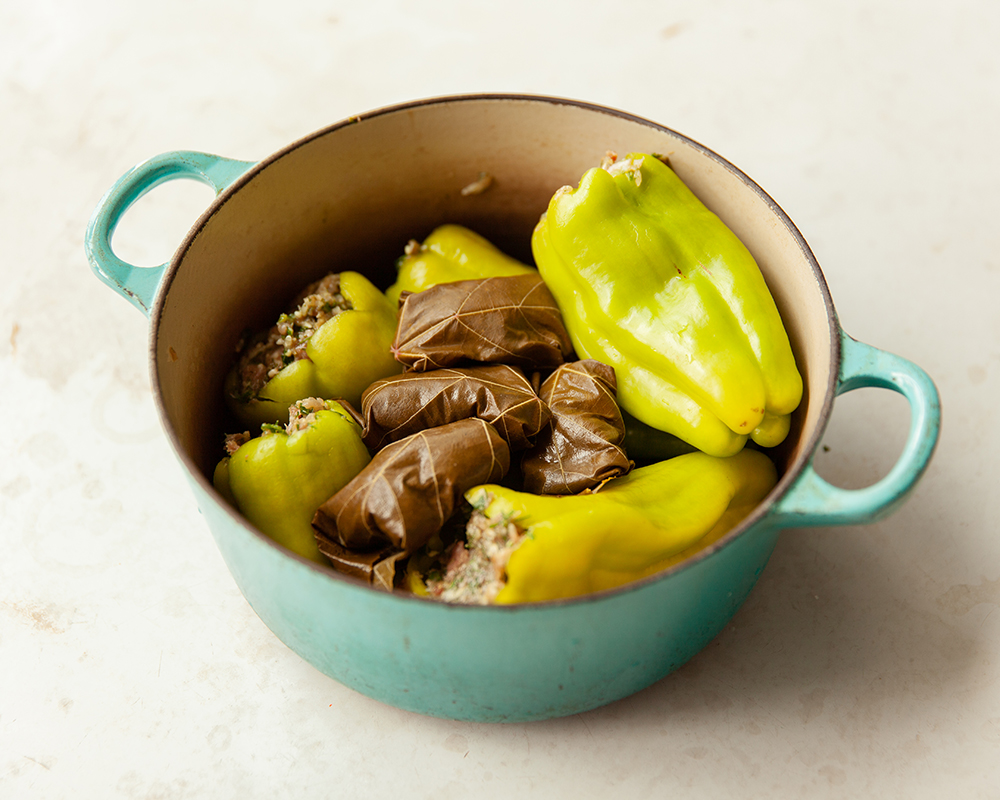
Stuffed peppers and grape leaves is a classic Romanian dish. I foraged the fresh leaves from a street near my parents’ house. Photo: Erica MacLean.
That Dunn never wrote another novel was one of my early literary sorrows. (I checked on her for decades. Surely she wanted to write more; she had so many fans.) So I was particularly intrigued when a bookseller at Malvern Books in Austin, Texas, insisted I read Why the Child is Cooking in the Polenta, by Aglaja Veteranyi (1962–2002), a novel likewise narrated by a daughter of circus performers—with the crucial distinction that Veteranyi’s tale is autobiographical. Born in Romania in 1962, Veteranyi left with her family in 1967 after the dictator Nicolae Ceausescu came to power. According to an afterword by Vincent Kling, the novel’s translator, they escaped “lethal poverty and a reign of terror” and were granted asylum in Switzerland. They started touring with their circus act; their home began and ended at their trailer door. Kling writes that the family suffered discrimination: though they were not of Romani origin, “their wandering life made them outcasts indistinguishable from Gypsies and subjected them to even greater instability.”
Veteranyi’s novel begins when the unnamed narrator is very young. The mother’s act is to hang by her long, “steel” hair. The father is “a clown, an acrobat and a crook.” The child narrator, who often breaks up the narrative with statements in all caps, writes about how her fragile family is held together by their cultural traditions. Early on she offers a long list of “MY FAVORITE THINGS TO EAT,” most of them Romanian specialties: polenta with salt and butter; chicken soup; cotton candy; pork in garlic-flavored aspic; stuffed peppers with sour cream and polenta; “funeral farina cake decorated with those colorful candies called Smarties”; grape leaves stuffed with meat. She tells us that her mother prefers to buy her chickens live, and that when staying in a hotel she “slaughters the chicken in the bathtub,” while the family makes enough noise to cover the sound. The narrator adds: “CHICKENS HAVE AN INTERNATIONAL SQUAWK WHEN THEY’RE BEING SLAUGHTERED; WE UNDERSTAND THEM WHEREVER WE ARE.”
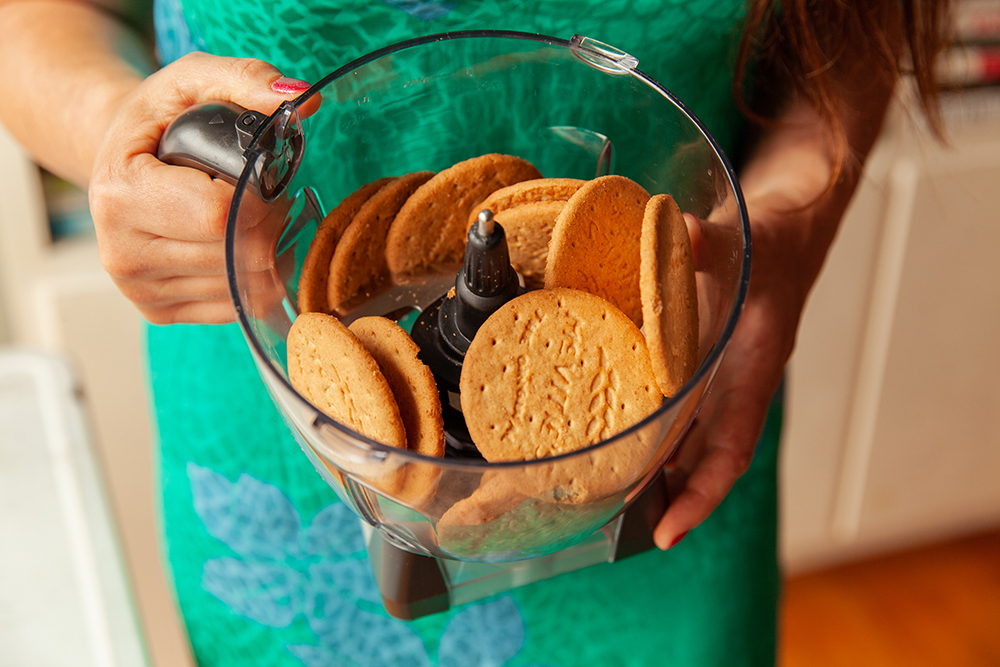
The recipe for the funeral “farina” cake asked for shortbread or graham crackers. I used my favorite substitute, digestive biscuits. Photo: Erica MacLean.
The family feels fortunate not to be in Romania, where relatives stand in line all night long for basic foodstuffs, and “even the children have rotten teeth, because their bodies suck out all the vitamins.” But their new surroundings are isolating and sometimes dangerous, and things soon deteriorate inside the home as well. The father has an incestuous relationship with the narrator’s older half-sister, and, it’s implied, with the narrator, too. The caring mother who got up early to slaughter chickens now abandons her daughter, then reclaims her when she is thirteen so as to pimp her out in a burlesque cabaret. (To protect her, the mother suggests she wear a merkin, since she’s too young to perform naked. “It looks real. And I feel dressed,” the narrator notes.)
During such traumatic moments, the narrator starts to visualize a child cooking in a pot of polenta, focusing on how much it hurts the child, in order “to calm me down.” These visualizations become “THE STORY OF THE CHILD WHO’S COOKING IN POLENTA,” a ritual shared with her sister—they find relief this way, as traumatized people sometimes can, expressing and working through their real pain via the imaginary pain of the child in the story. For the reader, though, the child cooking in the polenta is the narrator herself, and the polenta—mamaliga, or “mama’s food,” in Romanian—represents both her abusive mother and their lost motherland.
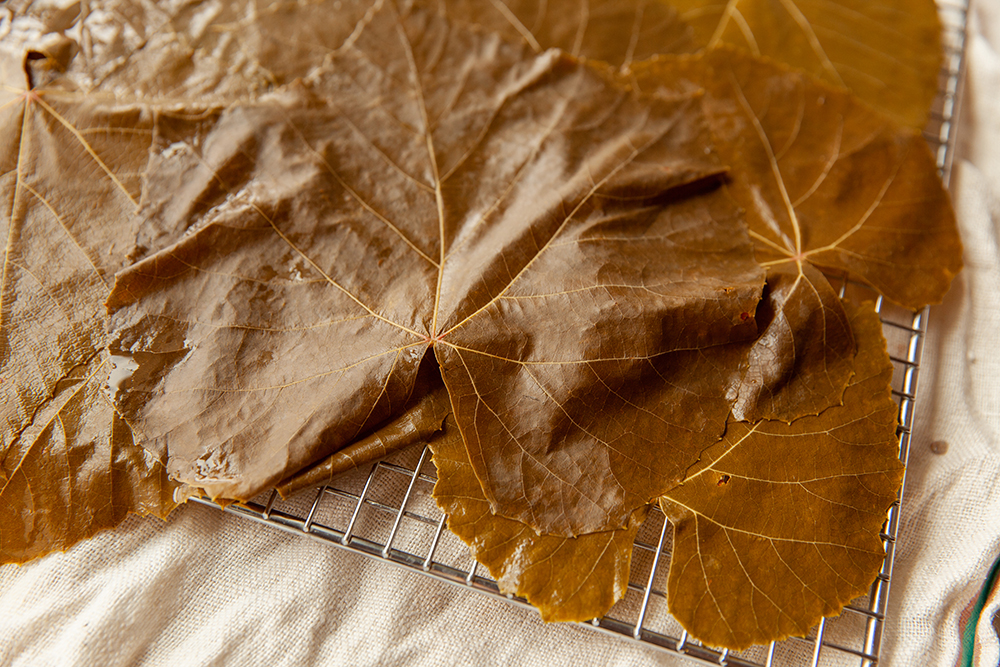
The fresh grape leaves get blanched in salted boiling water and then dried on a rack. Photo: Erica MacLean.
In the book’s later chapters, it becomes clear that the narrator’s upbringing has left her with no way out. The self formed by her family and her trauma is her only self, and she cannot renounce it. Nor can she live with it. Social worker types and relatives who have achieved bourgeois stability approach her with opportunities to join them, and possibly to heal, yet the reader understands that in doing so the narrator would lose the only thing she has. In real life, Veteranyi achieved considerable success as a writer, and her work has received still more posthumous acclaim, but in his afterword, Kling writes that she “felt she could not have remained human if she’d needed to accommodate herself to any typical way of life or career path.” In 2002, Veteranyi drowned herself in Lake Zurich.
I had serious reservations about cooking from Why the Child is Cooking in the Polenta, even though its pages were full of the Romanian foods of the author’s childhood. I share Veteranyi’s sense that food and mothering are inextricable, and this was lethal mamaliga, too sad to re-create. Yet the narrator’s insistence on food seemed like an invitation, and the Austin bookseller, a reader of my column, really wanted me to cook from it. I wondered if I could transform the polenta. The answer (as with any healing project) was, Only incrementally.
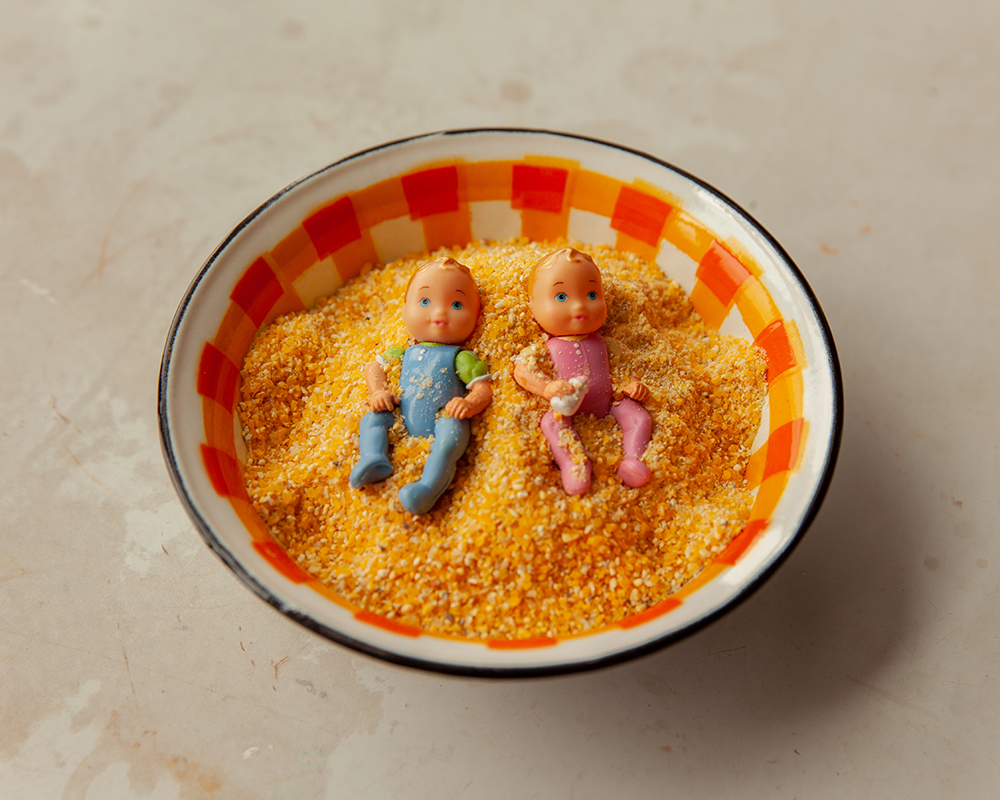
“The word ‘polenta,’ taken from Italian, is in Romanian mamaliga, meaning something like ‘mother’s home cooking’,” the book’s translator explains. Photo: Erica MacLean.
There were difficulties from the start. Despite its reputation for having everything, the internet doesn’t, and the few Romanian recipes I could find were lacking in detail. I have experience with the adjacent Black Sea cuisines of Bulgaria and the Caucasus, so I felt confident that I could make mamaliga, and also peppers and grape leaves stuffed with meat and topped with sour cream. But “pork in garlic-flavored aspic” was a challenge. Meats in aspic are a Russian tradition that can be delicious in the right hands. The Romanian recipes I found called for a pig’s foot, and flavored the meat and stock mainly with parsnip and raw garlic. It sounded risky, and the recipes were silent on many aspects of technique, especially how I might clarify the stock so that it wouldn’t be a murky gray color when it solidified. I’ve seen and eaten beautiful aspics but have never made one. The Romanian funeral “farina” cake was easy to track down, and also recognizable from other regional cuisines. It’s essentially a sweetened wheat berry porridge, similar to one eaten on New Year’s Eve in the Ukraine, but shaped and decorated with crushed cookies. I’ve made the Ukrainian version before, and was dubious that it could be anyone’s favorite food.
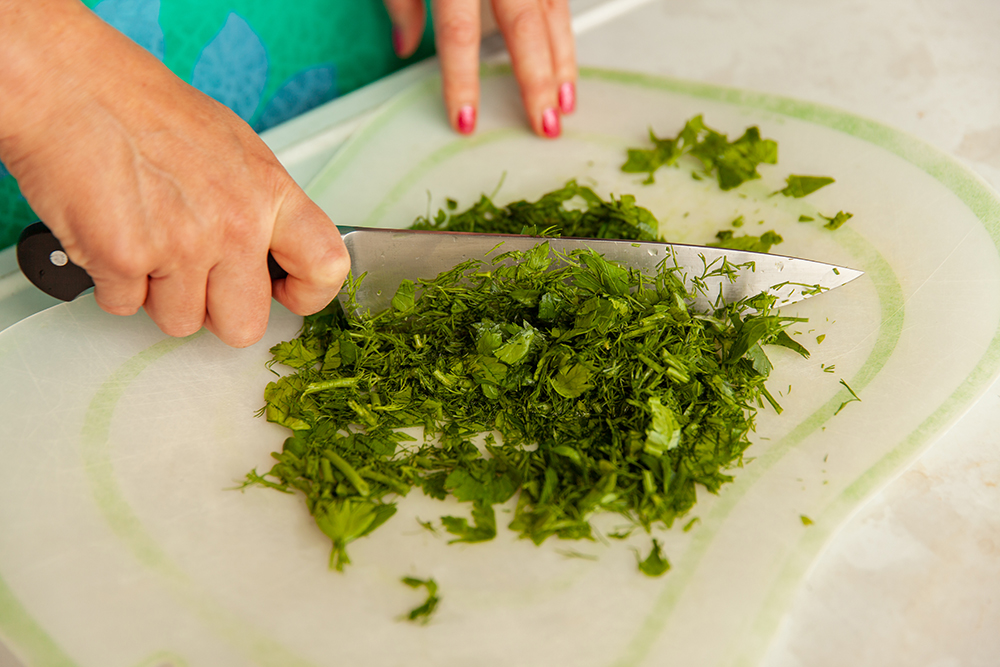
A trick to the stuffed peppers is putting a huge amount of chopped herbs in the meat mixture. Photo: Erica MacLean.
My mamaliga and stuffed peppers and grape leaves were very good—any competent cook can make that dish—but the cake and the aspic were so inedible that I haven’t included the recipe for the latter. In an attempt to make cooking with a pig’s foot more appetizing, I got a wonderful trotter from my local all-natural, head-to-tail butcher. It cooked so cleanly that there was hardly any scum to skim from the surface of the broth, but even after six hours of simmering, I was left with a mess of tendon and bone from which it was nearly impossible to pick any edible meat. (A friend instructed me to look for the delicious knuckle meat. I couldn’t find it.) I tried to compensate by adding fancy vegetables, but wasn’t sure how to flavor or cook them, and ended up with vegetables that were undercooked, bland, and, in the case of the parsnip, slimy. The stock tasted okay (prior to the addition of raw garlic) but my attempts to clarify it with an egg white made a huge, disgusting mess, and created no discernible clarity. I poured it all into a bowl and it set, but then fell apart when I tried to cut it. The raw-garlic reek in my refrigerator persisted for several days.
The “farina” cake was a simpler failure. You mix cooked wheat berries with ground walnuts and sugar, form the mass—that part worked surprisingly well—and then top it with crushed shortbread or graham crackers and Smarties. I amped up the sugar and the spicing but still wound up with something that tasted like pasty oatmeal. I also discovered only after the fact that Smarties in Europe are more like M&Ms, so my choice of the American version was laughably wrong.
When it was all done, I had two possible conclusions. One was that aspics and farina cake must be Romanian-grandmother cooking of the type that cannot be successful without a lifetime’s experience. That’s plausible enough. The other sprang from observing, during my research, that many of the dishes were for special occasions—the cake was for funerals; the aspic was for Christmas. Perhaps Veteranyi’s mother didn’t cook these things, and the narrator’s list of favorite foods, rather than a taste memory, was an immigrant’s romanticized notion of the lost country. That felt closer to the truth, because I defy even a steel-haired woman to a boil up a Christmas aspic in a hotel room. Somehow, I can’t help suspecting that if our narrator had had a mother who could do that—and would do it because it was her daughter’s favorite dish—the whole story might have turned out differently.
Mamaliga
1 2/3 cups coarse cornmeal
4 1/4 cups water
1 tsp salt
feta cheese (for garnish)
paprika (for garnish)
parsley, chopped (for garnish)
fried egg (for garnish, optional)
salt (to taste)
pepper (to taste)
Pour the water into a large pot. Heat the water, but don’t bring to a boil (this helps prevent the formation of lumps). Add the salt. Turn up the heat, and slowly add the cornmeal while stirring or whisking. Whisk until the liquid is incorporated and the polenta gets thick and starts to bubble. When that happens, turn down to a simmer and cover, leaving the lid just a crack open. Cook for thirty to forty minutes, stirring occasionally. Serve hot, seasoned with salt and pepper and garnished with feta, paprika, parsley, and a fried egg.
Stuffed Peppers and Grape Leaves
(Adapted from The Bossy Kitchen)
6 fresh grape leaves
1/2 lb ground pork
1/2 lb ground beef
an egg
1/4 cup uncooked white rice
a bunch of fresh dill, chopped
a bunch of fresh parsley, chopped
1 tsp salt
1/2 tsp pepper
6 Cubanelle or bell peppers
an 800-gram can of tomato puree
1/2 tsp salt
1/4 tsp ground pepper
1/2 tsp dried thyme
dill (to garnish)
sour cream (to serve)
Preheat the oven to 350.
Prepare the grape leaves. Bring a large pot of salted water to a boil. Plunge the leaves in the water, and cook until tender, two to three minutes. Drain, rinse with cold water, and spread out to dry.
Make the meat filling. Combine pork, beef, egg, uncooked white rice, chopped dill, chopped parsley, and salt, and mix using your hands until the mass is sticky and homogenous.
Cut the tops off the peppers, and remove any seeds. Fill the pepper shells with the meat mixture. At the center of each grape leaf, place about two tablespoons of the meat filling, in a one-inch-by-two-inch cigar shape. Fold over the top and bottom of the leaf, and then fold over the two sides to make a packet.
Pour the tomato puree into a baking dish just large enough to accommodate the peppers, and season with salt, pepper, and dried thyme. Arrange the peppers in the dish, topped with the grape leaves. Cover and cook in the preheated oven for an hour. After an hour, take the dish out of the oven, remove the cover, and return the dish to the oven for an additional thirty to forty-five minutes, until the peppers are golden on top and the sauce has reduced slightly.
Serve topped with chopped dill and sour cream.
Funeral Cake
1 cup whole wheat berries
1 tbsp vanilla
zest of an orange
zest of a lemon
1/2 tsp salt
1/2 tsp cinnamon
1/2 cup sugar
2 cups walnuts, toasted and ground
10 digestive biscuits or graham crackers, blitzed into crumbs
powdered sugar (for garnish)
cocoa powder (for garnish)
M&Ms (for garnish)
Rinse wheat berries in cold water. Bring three cups of cold water to a boil in a medium saucepan. Add wheat berries, vanilla, orange zest, lemon zest, salt, and cinnamon. Turn heat down to a simmer, cover, and cook until the berries are tender, around twenty-five minutes, or longer for a softer texture. Drain and cool.
Add sugar and walnuts to the wheat berry mixture. Turn the mass out onto a platter and shape, using wet hands so the mixture doesn’t stick. Coat with crumbs and powdered sugar. If desired, use a stencil to decorate the top of the cake with a cross made out of cocoa powder. Garnish creatively with M&Ms (or Smarties if you’re in Europe or Canada).
Valerie Stivers is a writer based in New York. Read earlier installments of Eat Your Words.
from The Paris Review https://ift.tt/3n1hEpm
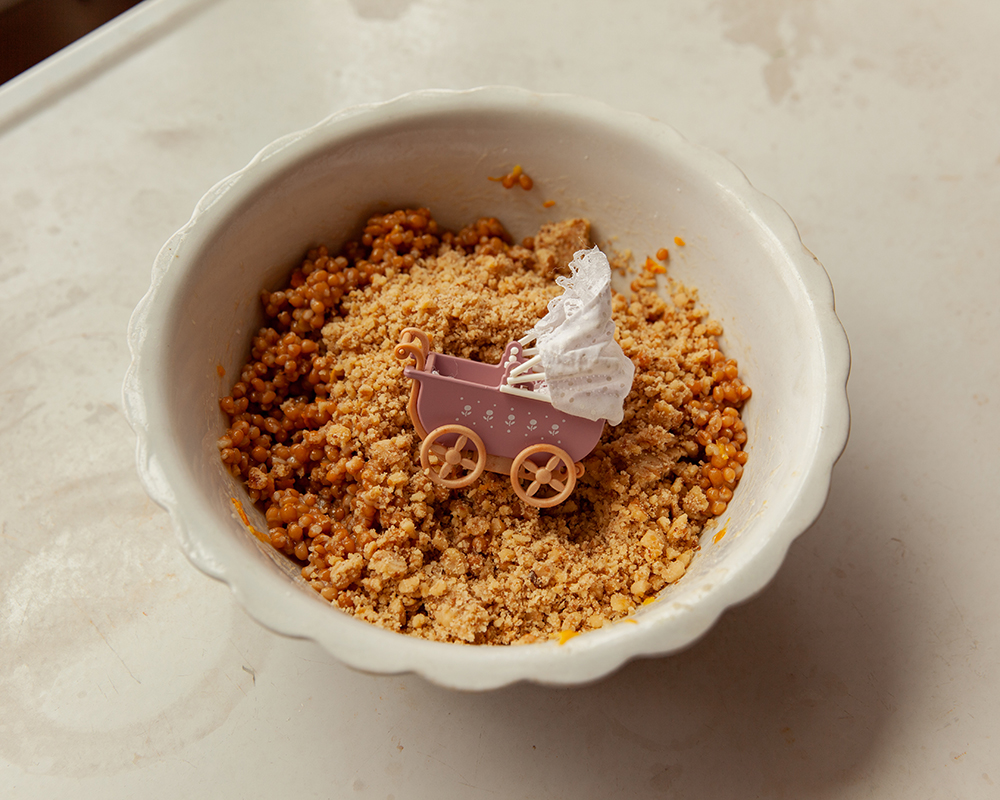
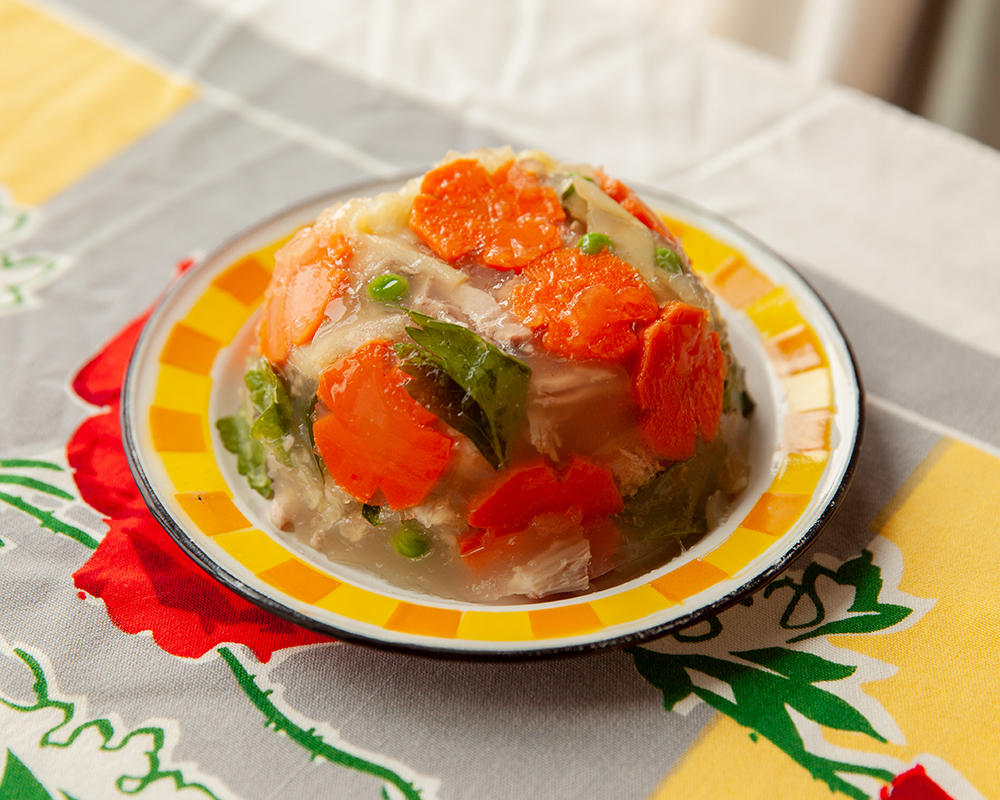
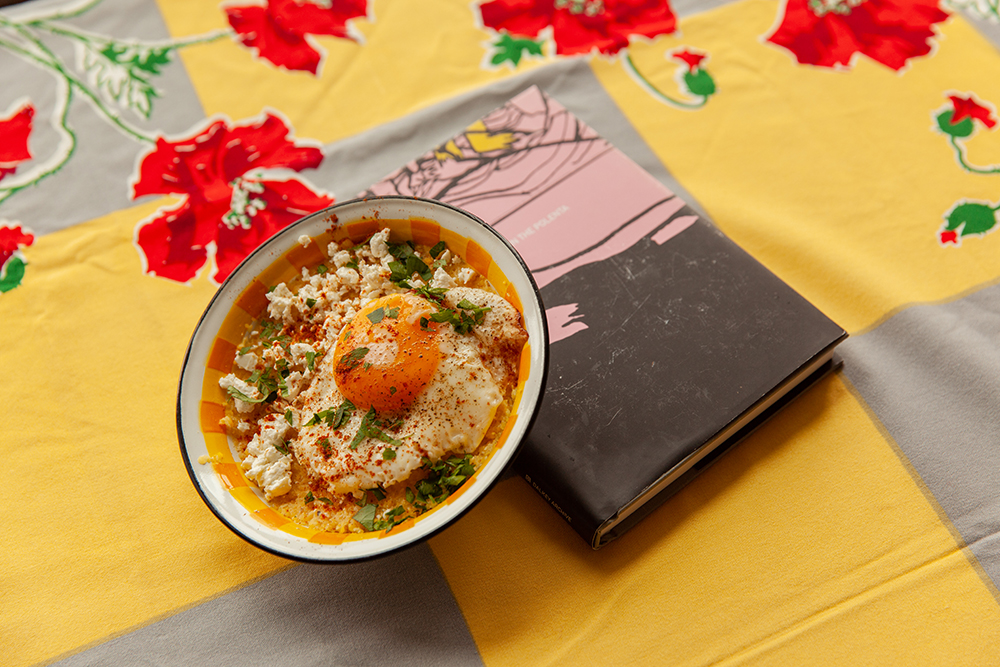
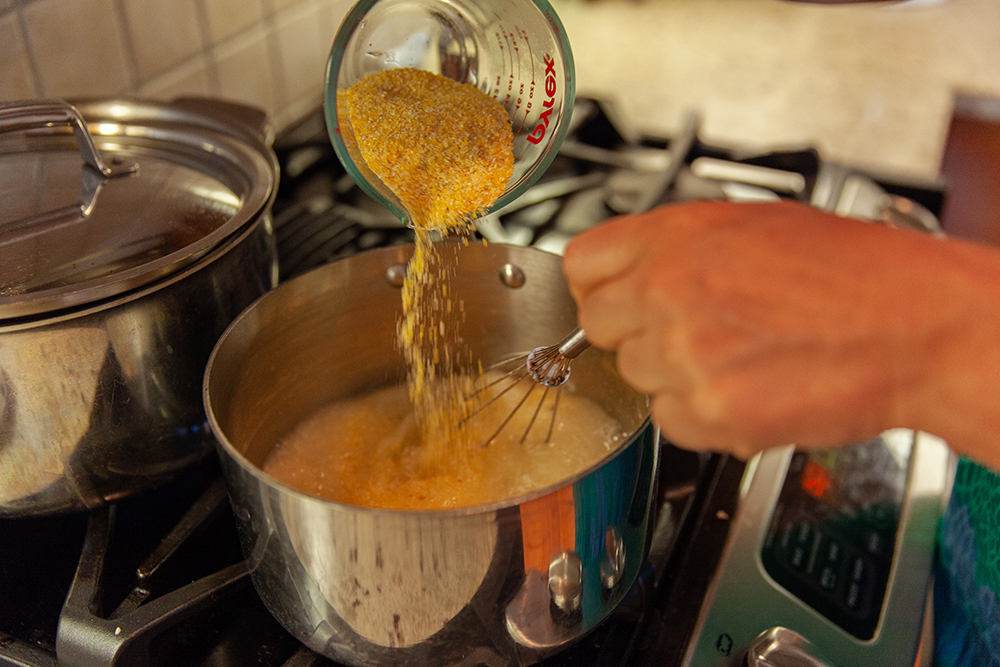
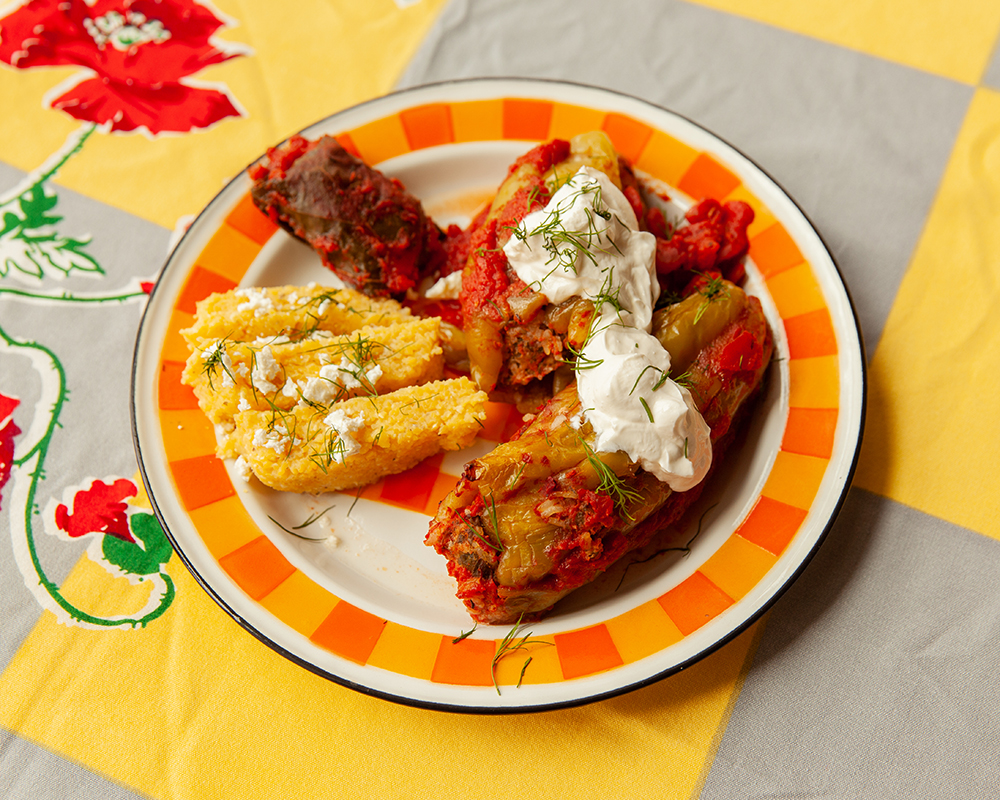
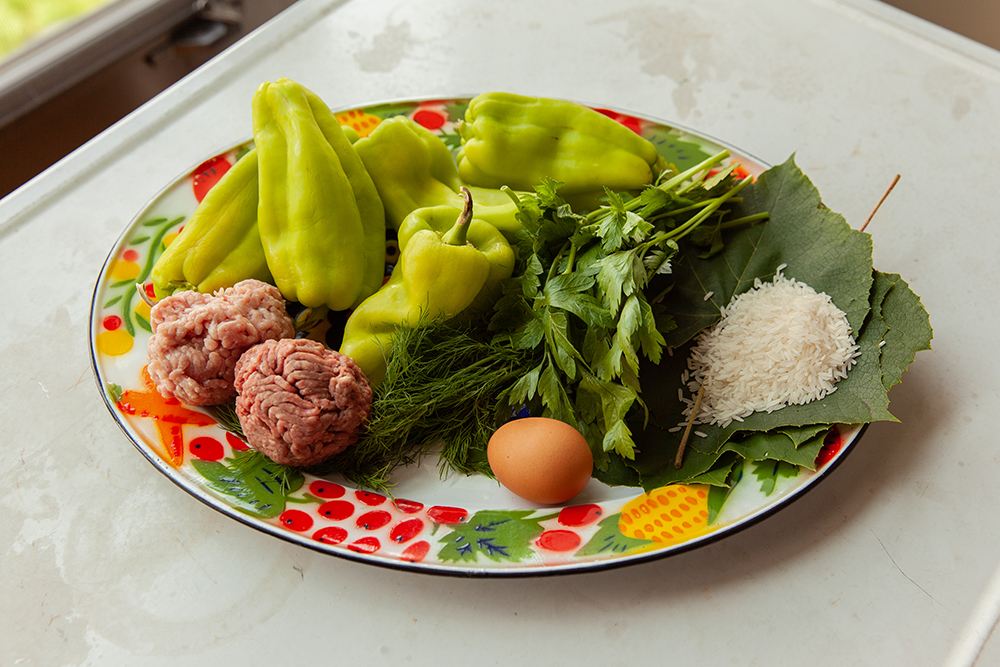
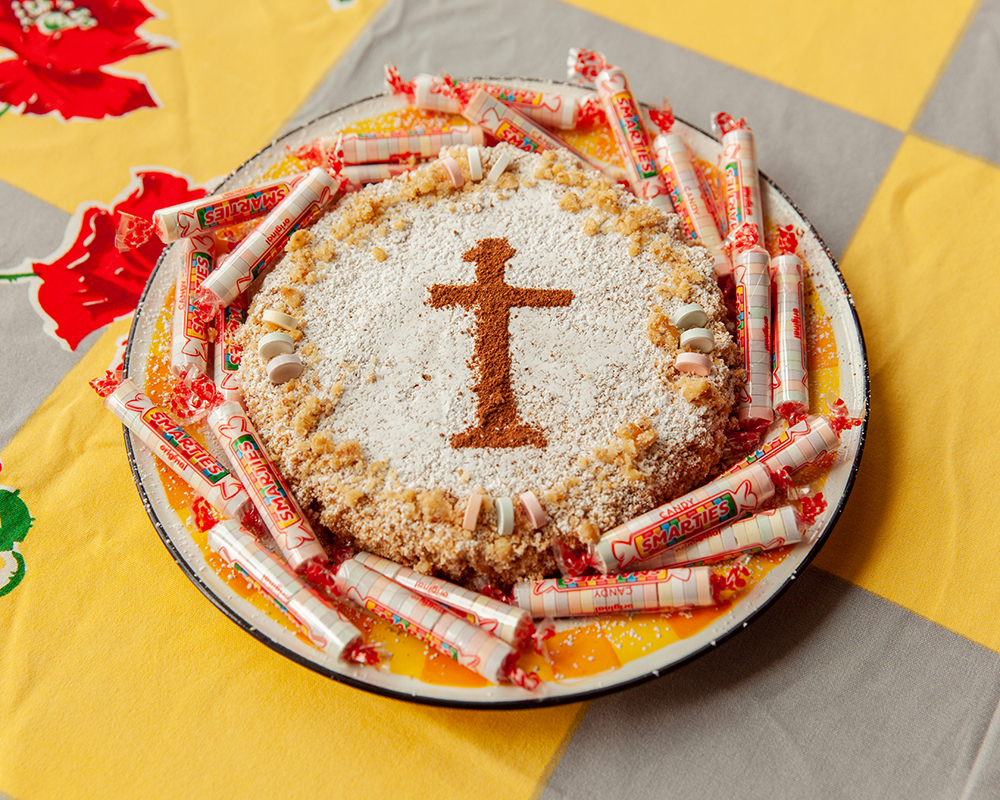
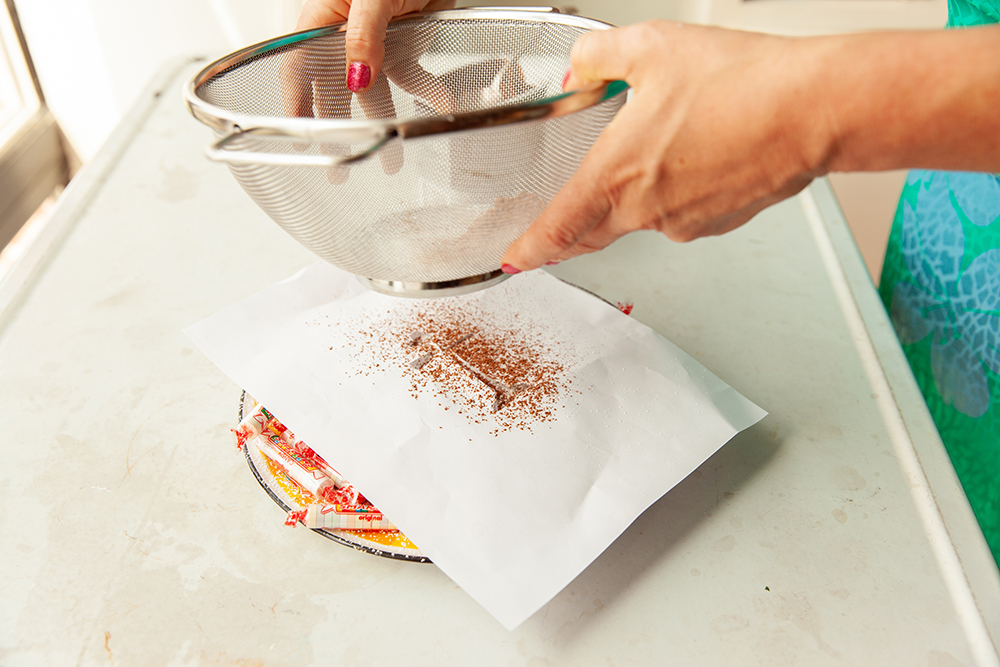
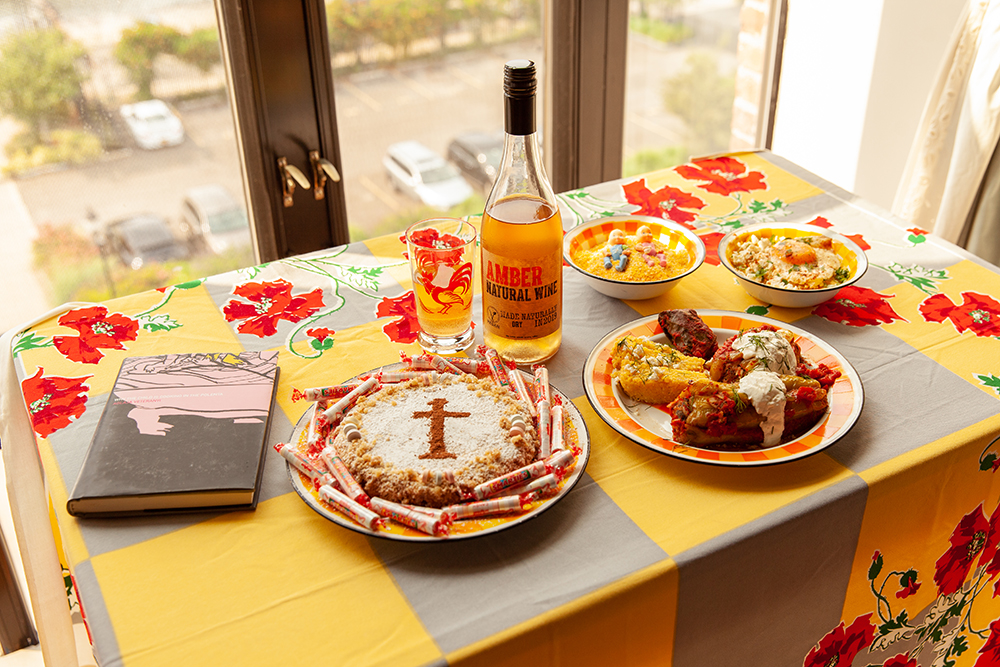
Comments
Post a Comment